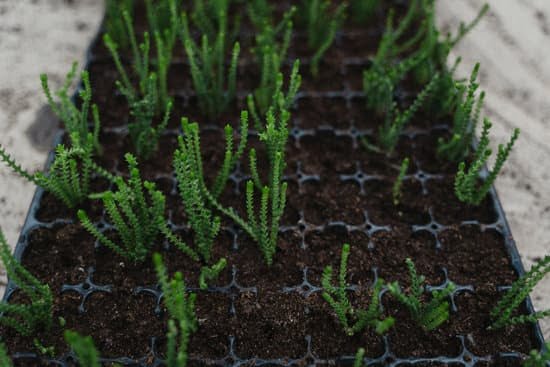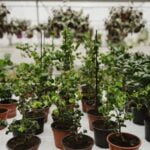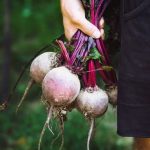Are you interested in creating a thriving vegetable garden in a limited space? In this article, we will explore the benefits of small area vegetable gardening and provide ideas to help you maximize your yield. Whether you have a small yard, a balcony, or just a few pots on your patio, there are plenty of options for growing fresh and nutritious produce right at home.
We’ll discuss tips for choosing the right vegetables, utilizing containers and raised beds, vertical gardening techniques, companion planting strategies, and designing a functional and attractive layout. By the end of this article, you’ll be equipped with the knowledge and inspiration to create an abundant small area vegetable garden.
Small area vegetable gardening ideas are perfect for urban dwellers or anyone with limited outdoor space who still wants to enjoy the benefits of growing their own produce. Even if you only have a small balcony or patio, there are numerous creative ways to grow fresh vegetables that are not only space-efficient but also aesthetically appealing.
From utilizing pots and hanging baskets to vertical planters and raised beds, there are plenty of options for maximizing yield in a confined area.
In addition to discussing specific techniques for small area vegetable gardening, we will also explore how companion planting can help you make the most of your space by choosing plants that thrive together. We will also provide tips for successful small area vegetable gardening including watering and soil management strategies as well as pest control methods.
Whether you’re new to gardening or have some experience under your belt, there’s something in this article for everyone looking to embrace the possibilities of small area gardening for fresh and nutritious homegrown produce.
Choosing the Right Vegetables for Limited Space
When it comes to small area vegetable gardening ideas, choosing the right vegetables is crucial to maximizing yield in limited space. Certain vegetables are better suited for growing in small gardens, as they require less space and can produce a high yield. Some popular choices for small area vegetable gardening include lettuce, spinach, radishes, carrots, green beans, cherry tomatoes, and peppers. These vegetables can thrive in containers, raised beds, or vertical gardens, making them ideal for limited spaces.
In addition to selecting the right vegetables for small gardens, it’s important to consider the yield potential of each plant. For example, lettuce and spinach are fast-growing crops that can be harvested multiple times throughout the season, providing a continuous supply of fresh greens. On the other hand, tomatoes and peppers may require more space but can still be grown successfully in small gardens with proper support systems such as trellises or cages.
Furthermore, when planning a small area vegetable garden, it’s essential to maximize space by practicing succession planting and intercropping. Succession planting involves sowing new seeds as soon as previous crops are harvested, ensuring a constant supply of fresh produce throughout the growing season. Intercropping involves planting complementary vegetables together in the same area to make the most efficient use of space and resources.
| Vegetable | Ideal for Small Gardens | Yield Potential |
|---|---|---|
| Lettuce | Yes | Continuous harvest |
| Tomatoes | Possible with support | High yield with proper care |
| Spinach | Yes | Fast-growing with multiple harvests |
By choosing the right vegetables and implementing smart planting techniques, small area vegetable gardening can be highly productive and rewarding. With careful planning and attention to detail, even the smallest of spaces can yield an abundant harvest of fresh and nutritious homegrown produce.
Container Gardening
One of the key benefits of container gardening is the ability to move the plants to follow the sun or protect them from harsh weather conditions. This flexibility allows for better growth and healthier plants. Additionally, containers can be placed on balconies, patios, or even window sills, making it accessible for everyone regardless of available space.
When selecting containers for a small area vegetable garden, it’s essential to consider drainage and material. Drainage holes are crucial to prevent waterlogged soil, while materials like plastic, ceramic, or wood all have different impacts on moisture and temperature regulation. Choosing the right containers will contribute significantly to the success of your vegetable garden.
In terms of vegetable selection for container gardening, there are several options that thrive in this environment. Herbs like basil and parsley do well in small pots, while tomatoes and peppers can thrive in larger containers. Understanding which vegetables are best suited for container gardening will help maximize yield in small spaces.
| Container Gardening Tips | Data |
|---|---|
| Consider Drainage | Adequate drainage is crucial to prevent waterlogged soil. |
| Choosing Containers | Select materials such as plastic, ceramic, or wood based on moisture and temperature regulation needs. |
| Vegetable Selection | Herbs like basil and parsley thrive in small pots; tomatoes and peppers do well in larger containers. |
Raised Bed Gardening
When it comes to small area vegetable gardening ideas, raised bed gardening is an excellent option for maximizing space and yield. Raised beds provide several advantages for gardeners with limited space, including better soil structure, improved drainage, and easier maintenance. Here are some tips for successful raised bed gardening in small areas:
1. Choose the Right Location: Select a spot in your garden that receives at least 6-8 hours of sunlight per day. Additionally, make sure the location has easy access to water and is convenient for regular maintenance.
2. Build or Buy Raised Beds: You can purchase pre-made raised bed kits or build your own using wood, cinder blocks, or other materials. The size of the raised beds will largely depend on the available space in your garden, but aim for a width that allows you to easily reach into the center from all sides.
3. Prepare the Soil: Fill your raised beds with a combination of high-quality topsoil and compost to provide nutrients for your vegetables. Avoid using garden soil as it may contain weed seeds and pests.
4. Choose Suitable Vegetables: When planning your small area vegetable garden in raised beds, consider growing compact varieties of vegetables such as cherry tomatoes, lettuce, radishes, and peppers. You can also maximize space by planting quick-growing crops like spinach and green onions alongside slower-growing plants.
5. Consider Vertical Gardening Techniques: In addition to traditional planting within the raised beds, take advantage of vertical gardening by incorporating trellises or stakes for vining plants like cucumbers or pole beans.
By following these guidelines for raised bed gardening in small areas, you can make the most of limited space while enjoying an abundant harvest of fresh homegrown produce throughout the growing season.
Vertical Gardening
When dealing with limited space, vertical gardening is a game-changer. This method allows you to utilize walls, fences, or trellises to grow your favorite vegetables, herbs, and fruits without taking up valuable ground space. Here are some vertical gardening ideas for small areas:
- Utilize hanging baskets: Hanging baskets are a great way to grow trailing vegetables such as cherry tomatoes, strawberries, and peppers. Hang them from a sturdy support or railing to maximize air circulation and sunlight exposure.
- Install a trellis for climbing plants: Cucumbers, peas, beans, and even certain types of squash can be trained to grow vertically on a trellis. This not only saves space but also makes harvesting easier as the fruits and vegetables hang freely without touching the ground.
- Use wall-mounted planters: Vertical planters attached to walls or fences can create a stunning visual display while also providing ample growing space for herbs like basil, mint, and thyme.
When implementing vertical gardening in small spaces, it’s important to consider the weight of the plants and soil when using hanging or wall-mounted systems. Ensure that the support structure is secure and can bear the load of your plants throughout their growth cycle.
By exploring these follow noopener”>small area vegetable gardening ideas for vertical growing, you can make the most of your limited space while enjoying a bountiful harvest of fresh produce.
Companion Planting
Understanding Companion Planting
Companion planting is based on the concept that certain plants can enhance the growth and flavor of neighboring crops, repel harmful insects, attract beneficial pollinators, or improve soil quality. For example, planting basil alongside tomatoes can help repel pests and improve tomato flavor, while growing marigolds near beans can deter nematodes in the soil. Understanding these interactions allows gardeners to strategically plan their small area vegetable gardens for maximum benefit.
Popular Companion Plant Combinations
For those interested in small area vegetable gardening ideas through companion planting, some popular combinations include planting carrots with onions to deter carrot flies, pairing cucumbers with dill or nasturtiums to repel pests, or inter-planting corn with beans and squash as part of the traditional Native American “Three Sisters” method. Additionally, incorporating herbs like mint or chamomile throughout the garden can help repel pests without taking up valuable planting space.
By carefully considering which plants thrive together in a companion planting scheme, gardeners can optimize both space and crop yield in their small gardens.
Planning a Companion Planting Layout
When planning a small area vegetable garden using companion planting techniques, it’s essential to consider plant spacing requirements, growth habits, and sunlight needs to ensure that each crop thrives alongside its companions. Thoughtful consideration should also be given to crop rotation and succession planting to maintain soil health and prevent pest buildup over time. With careful planning and knowledge of which crops complement each other best, small area vegetable gardens can flourish through strategic companion planting methods.
Small Space Garden Design
Maximizing Space With Vertical Planters
One of the best small area vegetable gardening ideas is to utilize vertical planters. These innovative gardening structures allow you to grow a wide variety of vegetables in a small amount of space. Whether it’s a wall-mounted planter, a tiered tower, or a hanging pocket system, vertical planters can help you maximize your growing area. This is particularly helpful for those who have limited ground space or live in urban areas where outdoor space is at a premium.
Utilizing Color and Texture in Garden Layout
When designing a small space vegetable garden, it’s important to consider the visual aspects as well as the practical ones. Using colorful pots, unique containers, and decorative trellises can add interest and beauty to your garden while also making the most of your limited space. Consider incorporating different textures and heights to create dimension and depth in your garden design.
Incorporating Functional Elements Into the Layout
In addition to aesthetics, it’s important to prioritize functionality when designing a small area vegetable garden. Make sure pathways are easily accessible for watering and maintenance, and consider adding functional elements such as benches or seating areas where you can relax and enjoy your garden. By carefully planning the layout of your small space garden, you can create an attractive and practical environment for growing fresh produce right outside your door.
Tips for Successful Small Area Vegetable Gardening
When it comes to small area vegetable gardening, success can depend on the care and maintenance of your plants. In limited space gardens, it’s important to pay extra attention to watering, soil quality, and pest management in order to maximize yield and ensure healthy plant growth.
Watering is crucial for the health of your vegetable garden, especially in small spaces where there is limited soil to hold moisture. Consider using a drip irrigation system or soaker hoses to deliver water directly to the roots of your plants, minimizing evaporation and ensuring efficient use of water. In addition, be sure to monitor the moisture levels of your soil regularly and adjust your watering schedule as needed based on weather conditions and the specific needs of your plants.
In small area gardens, soil quality is essential for plant growth and productivity. Before planting, enrich your soil with compost or organic matter to provide essential nutrients for your vegetables. It’s also important to regularly test the pH levels of your soil and make any necessary adjustments to create an optimal growing environment for your plants.
Pest management is another critical aspect of successful small area vegetable gardening. In confined spaces, pests can quickly spread and wreak havoc on your plants if left unchecked.
Implementing natural pest control methods such as companion planting, using physical barriers like row covers or netting, and introducing beneficial insects can help protect your garden from common pests without resorting to chemical solutions that could harm the environment or compromise the quality of your produce.
By prioritizing effective watering techniques, maintaining high-quality soil, and implementing sustainable pest management strategies, you can set yourself up for success in small area vegetable gardening while enjoying a bountiful harvest of fresh homegrown vegetables.
Conclusion
In conclusion, small area vegetable gardening offers a plethora of benefits for those with limited space. By carefully selecting the right vegetables and utilizing innovative gardening methods such as container gardening, raised bed gardening, vertical gardening, and companion planting, gardeners can maximize their yield and make the most of their small outdoor or indoor spaces. With careful planning and design, a functional and attractive layout can be created to make the most of every inch of available space.
It is incredibly rewarding to be able to grow fresh and nutritious produce right at home, regardless of the size of your garden. Small area vegetable gardening not only allows for a sustainable and cost-effective way to access fresh food, but it also provides the satisfaction of growing your own fruits and vegetables in your backyard or even on your balcony.
Additionally, by employing effective watering, soil management, and pest control strategies, gardeners can ensure the success of their small area vegetable gardens.
In summary, small area vegetable gardening offers endless possibilities for creative solutions to limited space constraints. With a little ingenuity and some careful planning, anyone can transform even the smallest outdoor or indoor area into a productive and thriving vegetable garden. So whether you have a tiny balcony or just a few square feet in your backyard, consider exploring the world of small area vegetable gardening for an enriching and satisfying experience.
Frequently Asked Questions
What Vegetables Can Be Grown in Small Spaces?
Vegetables that can be grown in small spaces include tomatoes, peppers, lettuce, spinach, radishes, carrots, and herbs like basil and cilantro. These plants are suitable for container gardening or small raised beds.
How Do You Layout a Small Vegetable Garden?
When laying out a small vegetable garden, it’s important to maximize the space by using techniques such as square foot gardening or vertical gardening. Grouping plants with similar water and sunlight needs can also help optimize the layout.
How Do You Grow a Lot of Vegetables in a Small Area?
To grow a lot of vegetables in a small area, focus on intensive planting and succession planting. Intensive planting involves spacing plants closer together to make the most of limited space.
Succession planting means planting new crops as soon as one is harvested to keep the garden productive throughout the season. Additionally, using trellises or other vertical supports can maximize growing area for vining plants like cucumbers or beans.

Welcome to my gardening blog! I am passionate about plants and enjoy sharing my knowledge and experiences with others. In this blog, I will write about everything related to gardening, from tips on how to get started to updates on my own garden projects.





